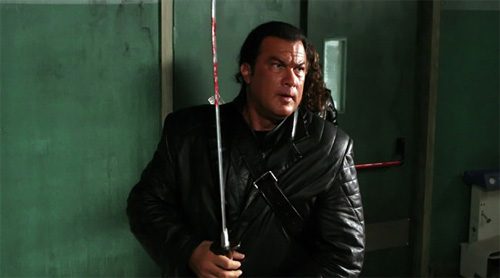I had very little interest in seeing Richard Crudo’s Against the Dark (2009) until recently. Way past his prime Steven Seagal (Above the Law 1988) fighting vampires in a direct-to-video release? However, over the last several months, I’ve gotten to know Mathew Klickstein, the guy credited for the script.
Mathew Klickstein (On Your Marc 2017) was over the moon when he sold his screenplay titled Last Night. A grim character-centric story that focused on what it would actually be like to experience the last days of humanity in a ravaged world, you can imagine his surprise when he was notified that Seagal was getting involved in the project and that the aging martial artist would be rewriting the script. What followed was the classic Hollywood tale of the end product being unrecognizable from its origins.

PopHorror: Against the Dark was originally titled Last Night and told a significantly different story than what ended up onscreen. Can you talk about your original premise?
Mathew Klickstein: I wouldn’t necessarily say that the story that ended up onscreen was that significantly different than the story laid out in the original pages of my script. Certainly, there’s a dramatic contrast between what I initially wrote versus what ended up in the film. That’s common practice in Hollywood and has been the case since the earliest days of the artform. No surprises there, particularly for a very young, newbie writer as I was at the time, all of about 23!
What was quite different was the tone/style. The script for what was bought by the studio as Last Night was far more of a 1970s-style naturalistic and stripped-down psychological thriller. I was thinking a great deal of the original Twilight Zone , particularly the more claustrophobic episodes such as “Will the Real Martian Please Stand Up?” and “Five Characters in Search of an Exit.” I was thinking more Ray Bradbury and Philip K. Dick. I wanted to focus on the existential terror the characters would be dealing with throughout the course of the one night in a cluttered, abandoned hospital, where outside, the world is not so much as ending as having ended already.
It was to be much more about their exhaustion, philosophical anxiety, and inner conflicts. The fact they know they’ve lost, that they’re likely the last men and women alive, and that all that’s left is to either commit suicide, starve to death, or go outside and let themselves be taken by the monsters. That was the thrust of my original script. For goodness sakes, I opened with a quote from Victor Hugo that I cadged from Walter Benjamin’s The Arcades Project [1940]. And I was obsessively binging Lars von Trier’s original Kingdom mini-series, which is also much more psychological and philosophical than blatantly action-packed as a horror story.
I was also very influenced by [Ernest Dickerson’s] Tales from the Crypt: Demon Knight (1995) [read our review here]. Still am. Which of course has plenty of trademark Crypt blood, guts, tits, ass, B-movie favorites, and a splash of camp, but is still, at its heart, about the inner, psychological tensions of the main characters stuck in the ramshackle motel over the course of one very long night of survival while the demons outside their door are egging on the end of the world as we know it. So, that’s where my head was at the time….And still more or less is!
I had investigated thoroughly the mythos and history of vampirism and discovered context and subtext that I was so eager to employ in my script. I was especially fascinated by the novella I Am Legend [1954] by Richard Matheson, another Twilight Zone heavy hitter, not surprisingly. As with the original works of Philip K. Dick and other likeminded writers from around the same time, Matheson’s I Am Legend has been adapted numerous times, and though the central conceit is there in these cinematic/TV translations—the last man on Earth holed up against the world of vampires right outside his door basically taunting him to death—the execution is completely different than what we see in his novella. So too with the way Last Night became Against the Dark. Same central concept, radically different execution. Simply put: I did not set out to write a Steven Seagal movie.
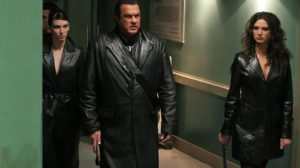
PopHorror: How did you feel about the script upon completion?
Mathew Klickstein: On a business/entrepreneurial level, I was delighted. My script was purchased! It was produced as a feature film by Sony Pictures! Starring a—sort of—name actor! Again, I was in my early twenties, and this was what I had been working for for most of my life. I had been making little short films and radio shows and writing short stories and novels and screenplays at an extremely young age at an extremely prolific clip. Now, finally, after countless discussions and meetings that went nowhere—as is typically the case, no matter how big you are—after thousands of pages, millions of words consigned to the printed page, and multiple script options, at long last, one of my scripts had been turned into a real film that people all over the world were watching and reading about and talking about. It was very exciting.
On an aesthetic level, yes, I was quite disappointed with the final execution of the screenplay to screen. It was not what I had envisioned for the most part, though I did appreciate how deep they delved into the blood and gore, the horrific sequences that did play out. And the fact they kept in my surreptitious reference to the documentary Crumb [1994] was kind of fun to see. “Hey, look! That’s my line that I snuck in there!”
I’m much more attuned to the immutable vicissitudes of the Hollywood Machine these days, having gone through similar experiences countless times, having watched friends go through it, having interviewed thousands of filmmakers/writers, having absorbed as much Hollywood history as possible. So, I certainly get it and understand why what happened happened. It’s a story as old as the industry and goes back to the history of writing, publishing, and art commerce itself. Read up on the travails of Michelangelo. This is just how the system functions, for good or ill. I recommend Upton Sinclair’s Mammonart [1925] for a full history of the relationship between commerce and art throughout the human epoch.
I’m much more jaded these days is what I mean. But at the time, I was equal parts elated that a film of mine had actually been made and frustrated that it was not what I had initially intended. The same could probably be said of most writers in the business, though. There’s a reason movies like Sunset Boulevard [1950], The Bad and the Beautiful [1952], The Player [1992], Bamboozled [2000], Barton Fink [1991], and The Big Picture [1989] still hold up. How many times has A Star is Born been remade? Jane Hamsher’s Killer Instinct [1997], about the making of Natural Born Killers [1994] or the various j’accuse books and essays by the likes of Joe Eszterhas,, remind us it’s just how it goes, and as Hunter S Thompson once reminded us too, if you want to be angry about it, you might as well “be angry at the sun.”
Welcome to the industry, kiddo!
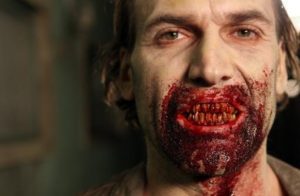
PopHorror: The initial plan was for you and your producer to make it yourselves, correct? Can you tell us how it ended up being sold instead?
Mathew Klickstein: I attended film school at USC where I would receive my BFA in screenwriting, which is about as practical as a degree in bookbinding. But what I did understand very early on at school was how lucky I was to be around—at least a few—other kids who were as passionate about cinema as I, and we were in the hub of it all in the middle of LA/Hollywood. So, I connected with a few people while there with whom I knew I’d want to work with in the future, and one was a bright young film business student named Tore Knos who produced a few features while we were in school and has gone on to produce, direct, and shoot a number of small and large projects over the past few years.
Tore had a great deal of respect for my writing work, which had often circulated around the campus courtesy of the fact that I was incessantly pounding out material that I’d give to friends to read who would in turn pass it around themselves. This was still before the social media phenomenon really took hold when people actually passed around printed versions of stories and scripts, and—boom—Tore and I decided shortly after graduation to work on something together with my writing it and his developing/producing it.
We met for lunches/drinks/coffee for about six months, discussing a concept he’d had about a more realistic version of the conventional vampire story. And, yes, our idea—or rather Tore’s—was to write something cheap and easy to make ourselves. He had the hospital concept already, for example, both because it would be logistically easier to use one location and he knew a specific place that he had access to through his ever-growing network of friends around the city at the time. That was when I went into super-research mode, read and watched a ton of stuff in our wheelhouse, and ultimately churned out the script in about a week. It was short, tight, and ready to be shot for almost nothing. It would be a real no-budget production that we were really enthusiastic about.
Tore had been on track to become an agent at one of the major firms, so he had some robust connections—the most important tool of any producer’s kit—which he utilized to get our script read by some top dogs. And, once again, it was meeting after meeting, discussion after discussion, positive script coverage after positive script coverage… and then, as is almost always the case, ultimately nothing.
Without a notable executive producer backing us, known talent onboard, or the financing we needed for even the paltry budget for which we were certain the film could be produced—still an untenable sum for two aspiring tyros in the early twenties—we were about ready to give up and move on. But then Tore found an exec who did want to jump onboard with the catch that he would produce it himself.
Tore and I had a series of lengthy conversations about this—we had been shepherding this baby for well over a year—but decided it would behoove us both—especially economically, since we both could use the money after all this labor of love stuff—to sell the project outright, cash in, pay off some personal bills, and hope the film would turn out good enough that it would lead to future work for the both of us.
That’s not exactly what happened in the end, but we definitely learned a lot through the experience, and, yes, there we were in our early twenties with a major credit under our belts. It may have been Seagal. It may have been straight-to-DVD. But it was still Sony Pictures, and having the dubious distinction of having written Seagal’s only horror film to date has always at least been a unique icebreaker at meetings.

PopHorror: Last Night wasn’t really supposed to be an action film, right? How did you first hear of Seagal’s involvement and what did you think when you found out?
Mathew Klickstein: I had intended it as a psychological thriller. There would certainly be action sequences, monsters of a sort, blood and guts and gore, and the essential elements of a horror film. But, again, I was more interested in the naturalistic, stripped-down aspects of such conventions as propelled in the 1970s. You watch a movie like original The Texas Chain Saw Massacre [1974], for example, and there’s really quite a lot of silence/slowness to it. I could see a modern horror fan being bored by that, sadly. That’s to say, there’s very little actual horror moments, but that’s what I love about it.
And when those action/horror scenes do happen, you’re not really prepared for it, because you’re in a constant state of dread about what might be happening next, particularly via the ingenious, innovative way Tobe Hooper chose to direct/shoot/edit it, the oddly ominous music he composed/performed for it, and the way he so smartly aligned it with larger dread facing the country at the time—the trenchant fear of The Unknown beyond those roads and small ghost towns and weird cultish communities out there, as brilliantly depicted in Truman Capote’s In Cold Blood [1966] or that Wes Craven brought to life in the original Last House on the Left [1972].
It’s the ol’ Alfred Hitchcock formula for cinematic—surprise versus suspense: Surprise being what is felt when two men are sitting at a coffee shop and a bomb goes off; suspense being the tension that arises from the dramatic irony in place when we, the audience, knows there’s a bomb under the table, but the characters don’t, and we’re just anxiously awaiting the forthcoming—maybe?—blast. Last Night was of the suspense style. Against the Dark was more of the surprise style. There was a squadron of army helicopters in Against the Dark. There were no helicopters in Last Night.
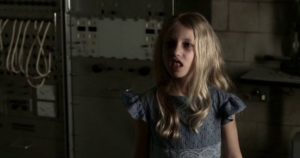
PopHorror: Did you ever have any interaction with Seagal or anyone involved with the production at all?
Mathew Klickstein: I only met with the [executive producer] a few times in the very beginning, when we were still discussing the initial script and deal that would ultimately be made, and his assistant/associate producer, of course, who was our main contact on the project during the three-year or so process it took from script sale to film distribution.
They shot the movie, for cheapness sakes, in Romania. They said I could come and check it out, but I’d have to pay my own way, which I could not afford and wasn’t really interested in anyway after hearing some of the horror stories from friends’ productions over there about how boring, freezing, and isolated it was during non-production hours.
I did get a souvenir from production, though: the director’s chair backing with my name on it as writer with the original title Last Night scrawled across it in a bloody, bullet-ridden script. I gave it to my dad who probably lost it soon after or sold it on eBay.
I was working with them on a second project that they brought to me—another straight-to-DVD, low-budget flick that would’ve been the sequel to a high-profile action film—but that fell through during the [Writer’s Guild of America strike] of ’07/08, as so many other deals throughout the industry did. And it was swiftly after that that I left LA.
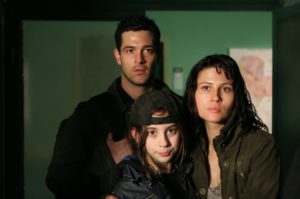
PopHorror: Can you describe the situation where you saw the film for the first time?
Mathew Klickstein: After I sold all my belongings—including my car, some stock in a wacky outsider art fashion company I was involved with as a creative director, and two script options for some much-needed scratch to get out—and left LA, I crashed at a friend’s place in Portland for a few months just to figure out what the hell I was going to do next with my career/life. I wasn’t really sure I was going to settle in Portland, particularly since at the time, it was virtually impossible to get any real work out there, even if you had a lot of experience/education, and I had little to medium of both anyway. It was just a very small community, very expensive, and rather exclusionary to outsiders.
I had a good friend who was a recruiter for various creative firms in the area, and I’d go help her out a bit for some free networking event grub/beer… And the stories I would hear from people with PhDs and who had left behind six-figure jobs to come out to Portland in interest of achieving their artistic dreams, only to find a place where people like that were literally fighting over janitorial and part-time retail/service, was frightening.
So, I applied for and got this random, possibly scam-y gig going to community colleges around the country pitching one of those alternative summer vacation deals where students could pay exorbitant sums to go volunteer and help out humanitarian organizations in various parts of the world.
During my time leaving LA, going to Portland, and getting involved in this gig, Against the Dark had been produced and was getting distributed via DVDs, and the Blockbuster Video push that was so all-important during those pre-streaming days. A close friend of mine who ran a notable DVD database website that long ago became defunct said he would be up to interview me about my rollercoaster The Day of the Locust-esque experience and review the film.
I jumped at the opportunity, but he said the catch was I would have to actually watch the film first. He couldn’t possibly interview me about a movie I hadn’t even seen. And we both knew it was extremely different from my script, both because of the whole Seagal angle, which was totally contrapuntal to my original script, and because two friends of mine who had seen it had drunkenly called me one night laughing their asses off about it and asking me how many helicopters I had written into the script before I hung up. Yikes.
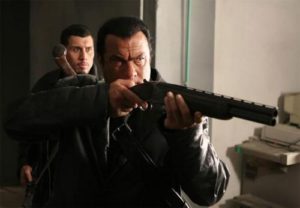
There I was: basically homeless. Living on the road. Traveling around the country for some rando organization I’m pretty sure was ripping off both sides of the equation viz, and being stuck at a small motel in middle-of-nowhere Texas, and my buddy is phoning me saying I need to find a way to watch the film before he’d give me at least a little press that I was hoping might help me with whatever the heck I was going to do next with my creative career… a year after not only the devastating writer’s strike but the economic collapse of ’08/09 to boot. It was a weird time in my life and in the nation’s life.
Luckily, it turned out the next motel in El Paso I stayed in had a video library, and you could actually rent a DVD/VHS player for your room. Not surprisingly, they didn’t happen to have a copy of Against the Dark. But there was a Best Buy close to where I was staying, so in I went, easily found a copy of the DVD on the New Release shelves, went back to my motel, watched it… and was fairly poleaxed by the whole experience.
There was my name up there on the relatively large TV screen as sole writer. But the movie was not what I wrote. I went through a kaleidoscope of emotions and since I was in an extremely strange place in my life/career and in an extremely strange place/time in the country, I tried to make the best of it by clinging to the notion that, “Oh, hey! A movie of mine got made!” versus being totally depressed that the final product was diametrically opposed to my original vision.

Honestly, it’s how I still feel about it today in the extremely rare instance that it comes up… which is almost never. It’s basically a secret I keep locked away that on rare occasion comes up, like if I played the harp when I was in high school or was someone who spoke five esoteric languages or something like that.
PopHorror: I saw your new animated short, People On The Roof, but what else are you working on right now?
Mathew Klickstein: As one of the last surviving Working Class Creatives, I’m constantly knocking out new projects all the time. I have no choice. I really ascribe to the shotgun effect in producing projects, just work on and make as much stuff as possible—and to paraphrase Homer Simpson—hide under some coats and hope that somehow one of the projects works out. Kind of like those aforementioned mid-century pulp/sci-fi writers I so admire like Philip K. Dick, Matheson, Bradbury, I live off of scant advances and small deals that hopefully lead to bigger and better things down the road.
Also—damn it!—I really enjoy writing and producing, and I seem to be fairly good at it sometimes. So, I just keep going. I keep thinking I’ll finally give up and get a real job, but it hasn’t happened yet. And at this point, it’s probably too late for me. What else could I possibly do except for write and produce, when that’s really all I’ve ever done and have any experience at, aside from teaching the same? Which I also enjoy but is becoming equally difficult as a career choice, particularly at the moment with all the layoffs and budget cuts in the school system.

Okay, enough whining and clearing my throat, but thanks for the empathetic ear…
The three main projects I have coming out next are an audiobook original with a high-profile woman in LA who helped to really drive the comedy scene in the ’90s and early 2000s that should be out this June, I believe; the audiobook edition of my groundbreaking, bestselling middle-grade reader, The Kids of Widney Junior High Take Over The World!, which I think is out in March; and my Comic-Con/modern fandom oral history that will be launched via SiriusXM this summer. I’m particularly excited about this one, as there’s definitely documentary/feature film and book potential there, too.
There’s been enough serious interest in adapting my highly-acclaimed, recently released horror/sci-fi comic book series/graphic novel, You Are Obsolete, to TV that by the time this article runs, it may already be announced. Two documentaries I produced—Act Your Age: The Kids of Widney High Story and Skin: A History of Nudity in the Movies—have recently begun streaming on Troma Now and Hulu, respectively. And I’ve been messing around with a few things via Heavy Metal Magazine, as well including some podcast stuff such as their streaming my old interview-based series, NERTZ, adapted from my book Nerding Out.
A few other things in the works too, and anyone who’s gone this far in the article who might actually be into the next Mathew Klickstein projects can voyeuristically keep me tracked on my always-up-to-date website.
PopHorror: I really appreciate your time today!
Mathew Klickstein: Thanks for the chat, Michael! I really appreciate your interest and look forward to more from you in the future!
 PopHorror Let's Get Scared
PopHorror Let's Get Scared
